Many insects, such as beneficial insects, attract succulents and cacti because of their striking beauty. For example, bees, parasitic wasps, and beetles help plants open their flowers and assist in pollination. Similarly, small bagworms on agave wander off the plants and guard them but never cause any damage. In this article, learn about exterminating pests on your succulents and cacti.
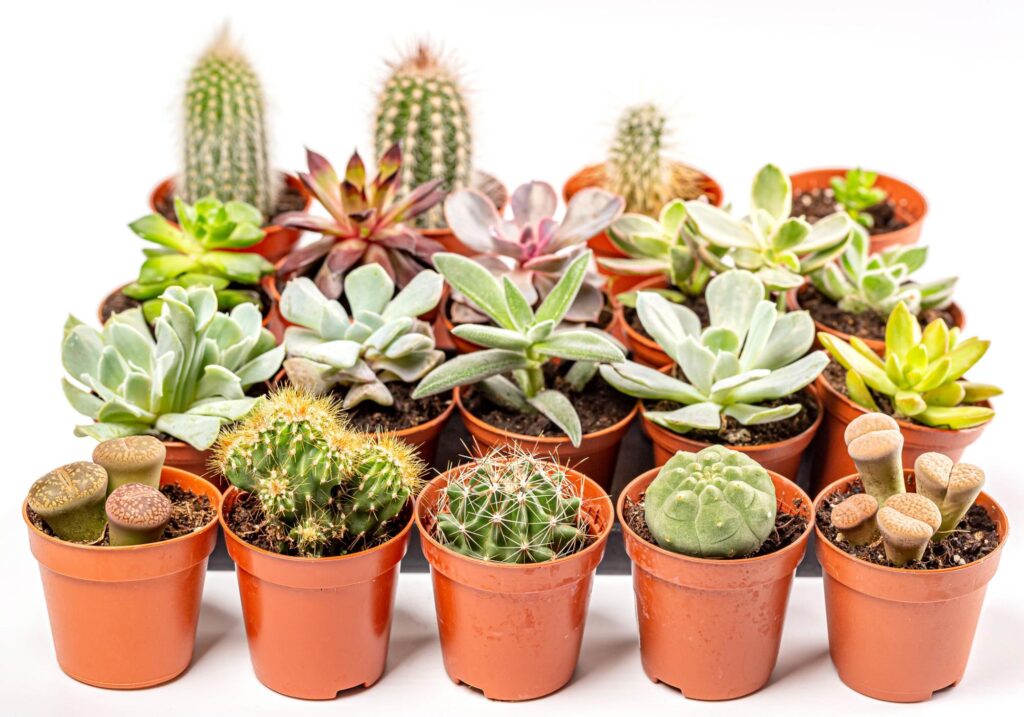
A beautiful collection of succulent plants, cacti, and houseplants
Also, the sharpshooters appear on agave and century plants and use them as anchorage and live on them. At the same time, other insects use succulent plants for food and cause damage through their piercing-sucking mouthparts. These insect pests inject toxins into succulents, spread over healthy plants, and badly deter their aesthetic value.
Therefore, understanding these pests’ feeding styles and damage will help early diagnosis and best management practices for their extermination.
Succulent plants and cacti are pest problem-free houseplants. However, they are more prone to bacterial and fungal infections due to overwatering, and these succulents also get occasional insect infestations. Both natural and chemical methods can play their role in indoor and outdoor environments to eliminate these pests.
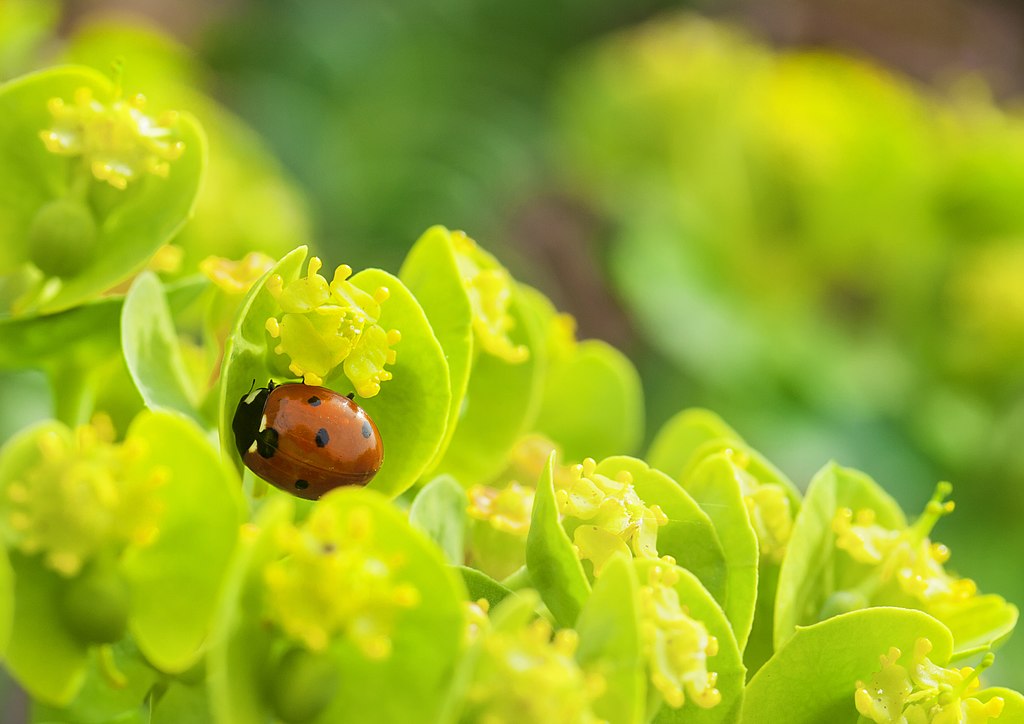
A beneficial insect—lady beetle on the flower of a succulent plant
This article will discuss the all-important methods to diagnose and exterminate pests on your succulents and cacti.
First Know The Pest Problems
The most common pest infestations of succulent plants are sap-sucking insects such as mealybugs, aphids, whiteflies, spider mites, fungus gnats, and scale insects.
Sap sucking insects have long, slender, and piercing mouthparts that aid the insects in sucking out the plant juices. These insects also inject their saliva into plant tissues to dissolve the cells and fluids further.
The feeding damage includes chlorosis, mottling, and browning of leaves. Under severe infestations and constant feeding, the cactus pads lose their strength to fight off pests.
RELATED: Pests in Succulents and How to Get Rid of Them by Chemical & Natural Ways?
True Bugs Or Hemipterans—Enemies Of Prickly Pear Cactus
The following are the most common pests that infest the landscape prickly pear cactus;
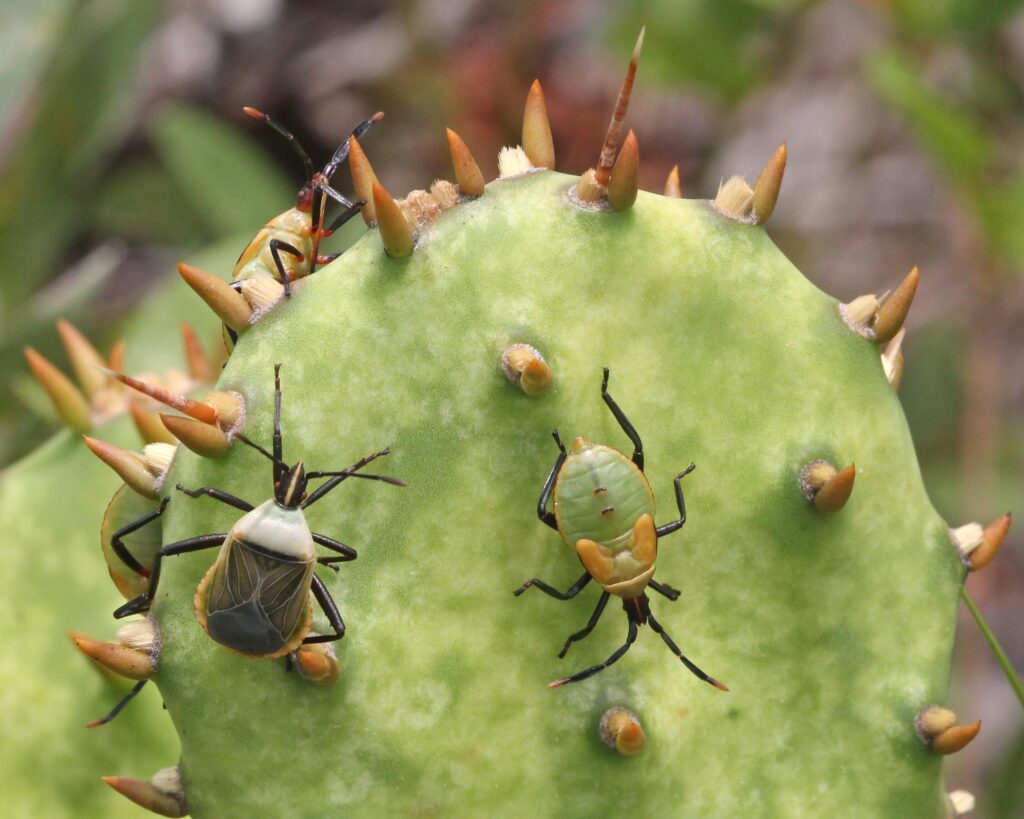
Cactus coreid on prickly pear
These pests have triangular antennas and are common on prickly pear cactus.

Nymphal stage of Cactus coreid
The adult Cactus coreid appears tan and about 3/4 inch long. They spend their winters hiding in cracks, leaf debris, and crevices.
Cactus coreid can produce several generations per year.
Other most common succulent pests are the yucca plant bug, Narina species, and Hesperolabops gelastop.

Yucca plant bug
The feeding damage of the yucca plant bug causes small pale yellow spots (because they suck out the plant chlorophyll molecules) that may coalesce to form lesions. Moreover, the yucca plant bug reduces the cosmetic value by depositing its excretions in the form of black spots.
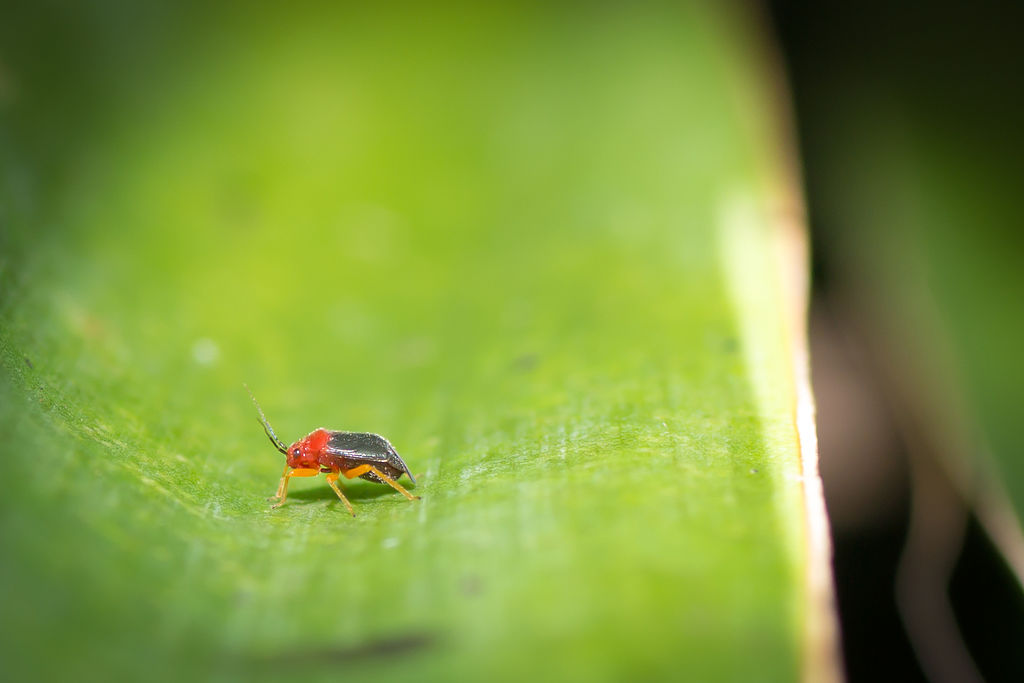
The nymphal stage of the Yucca plant bug
Other members of true bugs also infest your succulents and cactus and produce yellow spots.
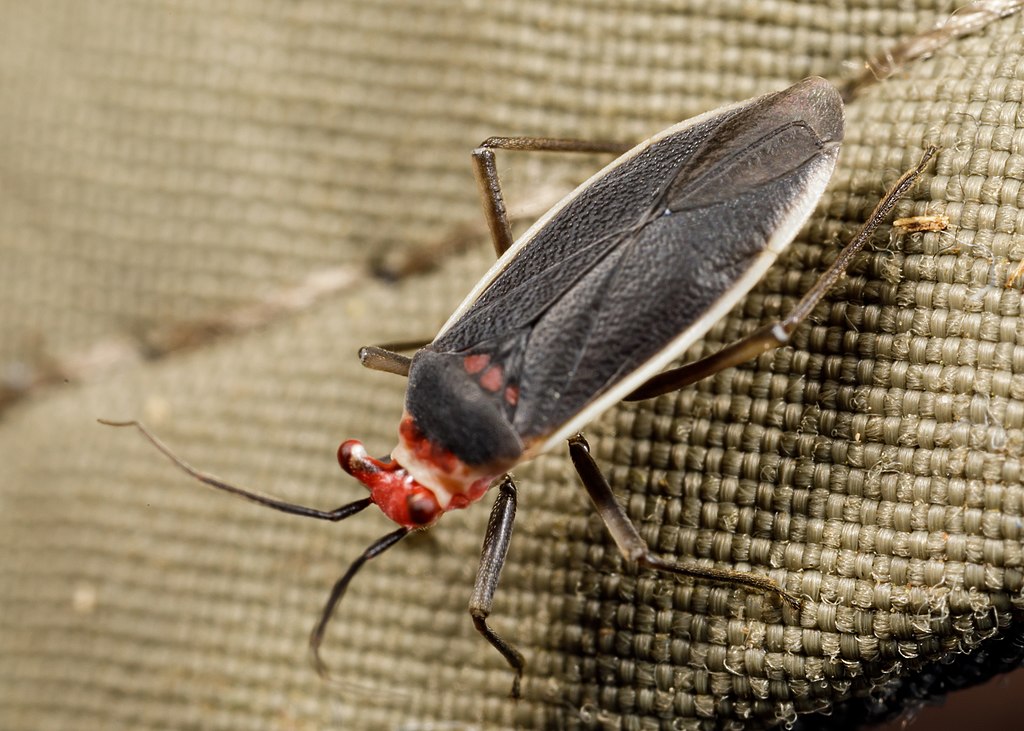
Hesperolabops gelastop or cacti bug
Scale insects such as cochineals are succulent pests. They insert their needle-like mouthparts into the host plant and begin feeding. Like mealy bugs, scales do not move much once they establish for themselves suitable feeding sites.
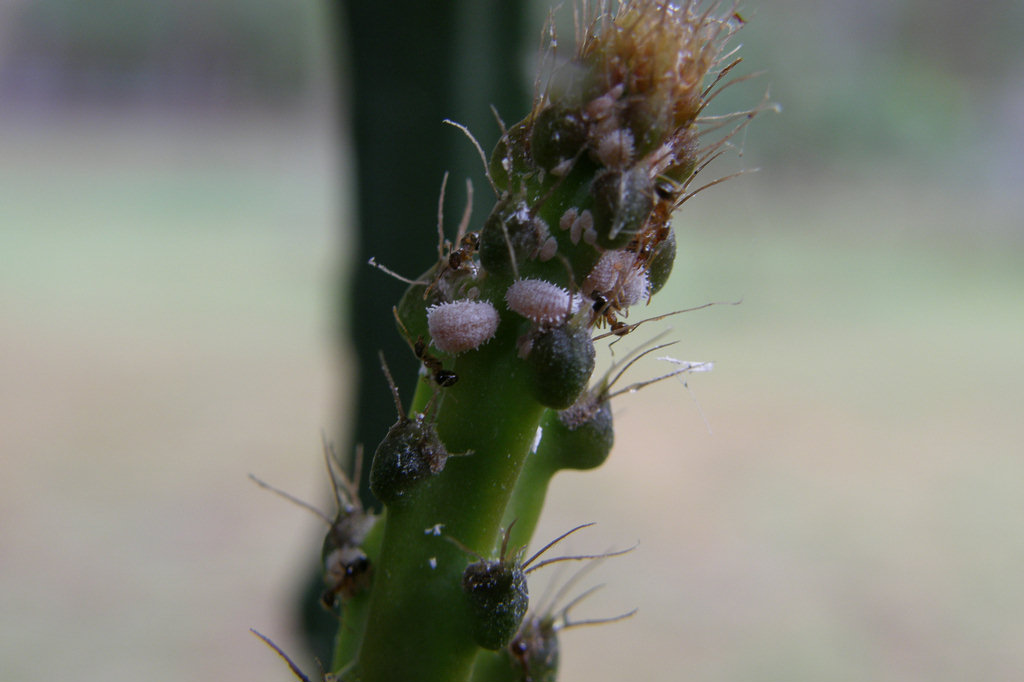
Mealybugs and black ants on the Queen of the Night cactus
Scale Insects
While the crawlers stage appears as insects with six legs but only briefly, they become sessile once they undergo molting and emerge as adults. Scale insects spread to other plants through black ants and by attaching to gardening tools.
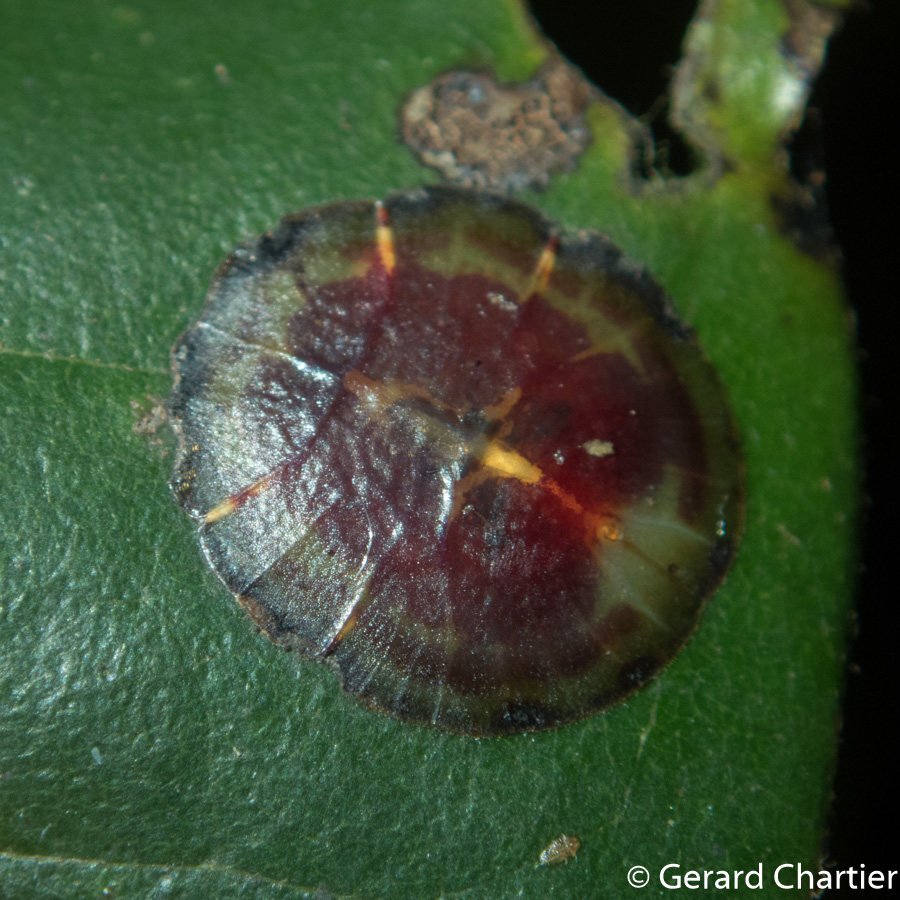
Soft scale insects on cactus
Scales secrete honeydew which supports the growth of black sooty mold fungus and disrupts the cosmetic value of cactus pads and spikes.
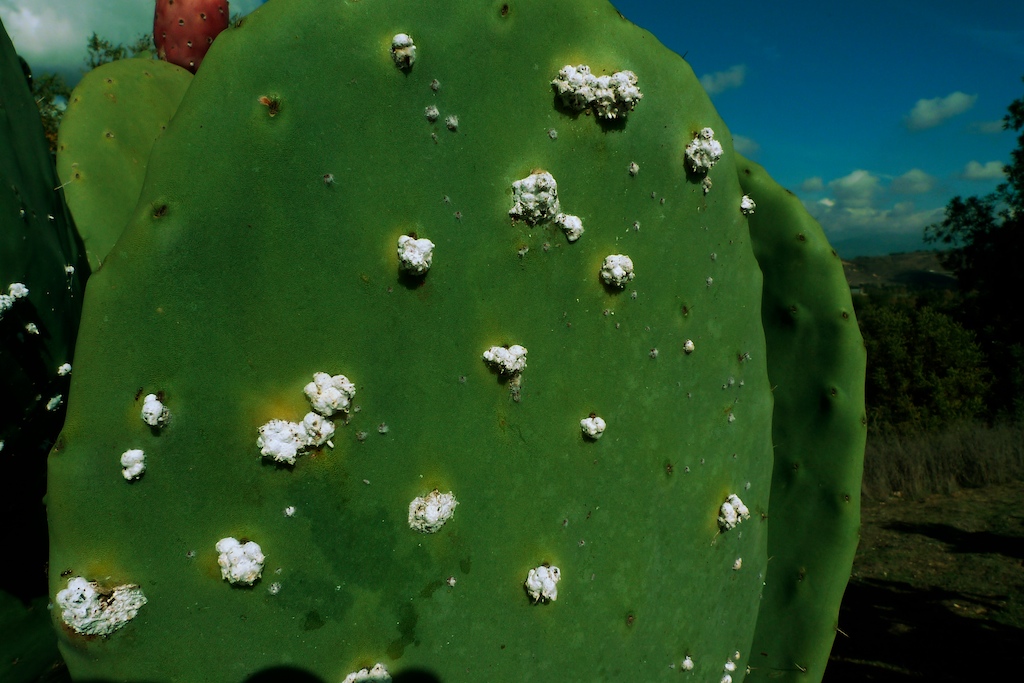
Cochineal on cactus and are busy sucking their sap
Like true bugs, scales on succulents and cactus produce yellow spots and necrosis, leading to defoliation.

White spots on cactus are due to cochineal infestations
Other Pests Of Succulents And Cacti
Flying and chewing insects such as fungus gnats, long-horned beetles, caterpillars, and agave weevils contribute to severe damage in the succulent garden. These pests remove the tissues from their host plant.

Spider mites damage foliage and the entire plant
While adult fungus gnats are harmless, their larvae cause tremendous damage (because they feed on root hairs in large colonies). Similarly, spider mites can kill the landscape prickly pear and yuccas because they reproduce quickly and are very difficult to eliminate.
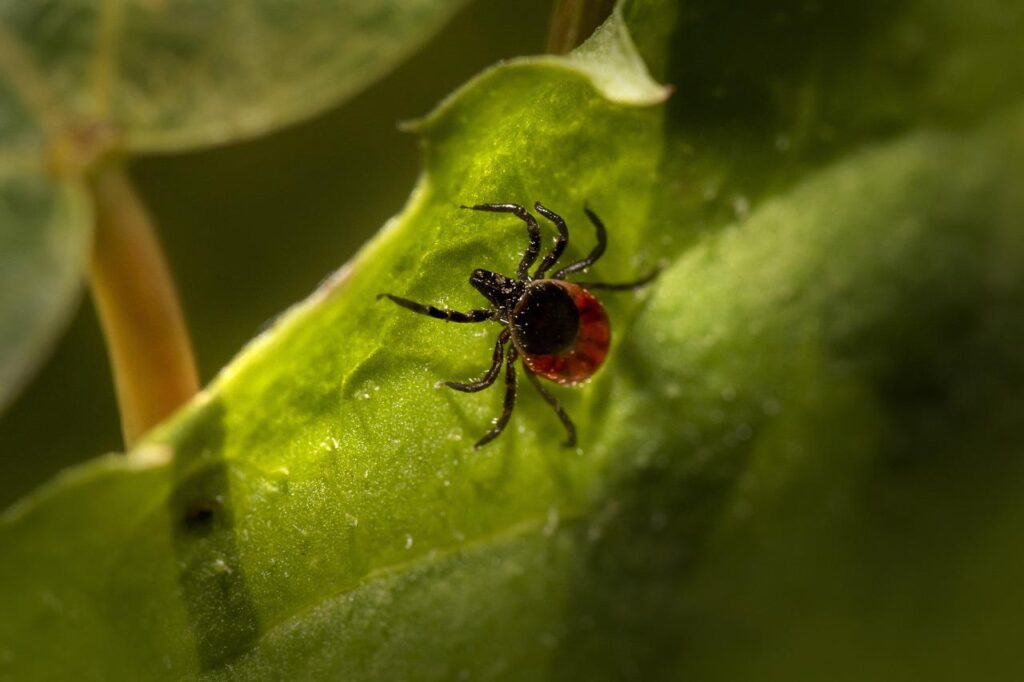
Spider mite on host plant
Exterminating Pests On Your Succulents And Cacti
Proper Growth Conditions
One of the best practices to exterminate pests on your succulents and cacti is to provide them with proper growth conditions, and these are;
- Temperature (65 to 90 degrees Fahrenheit)
- Soil (the well-draining potting mix is perfect for these magically beautiful plants)
- Light—succulents need bright sunlight, while some need indirect to partial light exposure.
- Humidity (60%)
- Water—light watering is acceptable, while the soak and dry methods are essential to protect the cacti and succulents from root rot and bacterial infections.
Note: Soak and dry method involves watering succulents until the soil is completely soaked and then letting it dry before the next watering.
Overwatering in succulents and cactus result in bacterial and fungal infections. Therefore, to avoid the spread of root rot and damage to above-ground plant parts, reduce the watering. The best thing to do is to re-pot the plant with a fresh soil mix and remove the damaged roots and leaves.
Note: The repotting of overwatered succulents and cactus is the only solution to prevent severe root rot; otherwise, you will not be able to revert the root rot disease.
These factors are critical for succulents and cacti and vital in their healthy growth and blooming.
Monitoring For Pests
Regular monitoring for harmful insects helps in their early detection and pest control. Also, quarantine the infected plant from the rest of the healthy plants if you suspect any pest. Carefully examine the plant and treat it to remove the pest problem.
Quarantine the newly purchased succulents and cactus for at least two weeks to check for pest infestation or any eggs laid in the potting mix. Destroy the eggs and repot the plant into a new potting mix to prevent spreading to other plants.
Pruning And Cutting
Pruning and cutting play a vital role in the healthy growth of succulents and cacti. The removal and cutting back of unnecessary and discolored leaves will support the new changes and blooming. Also, pruning will remove the diseased and weak leaves, which may attract pests.
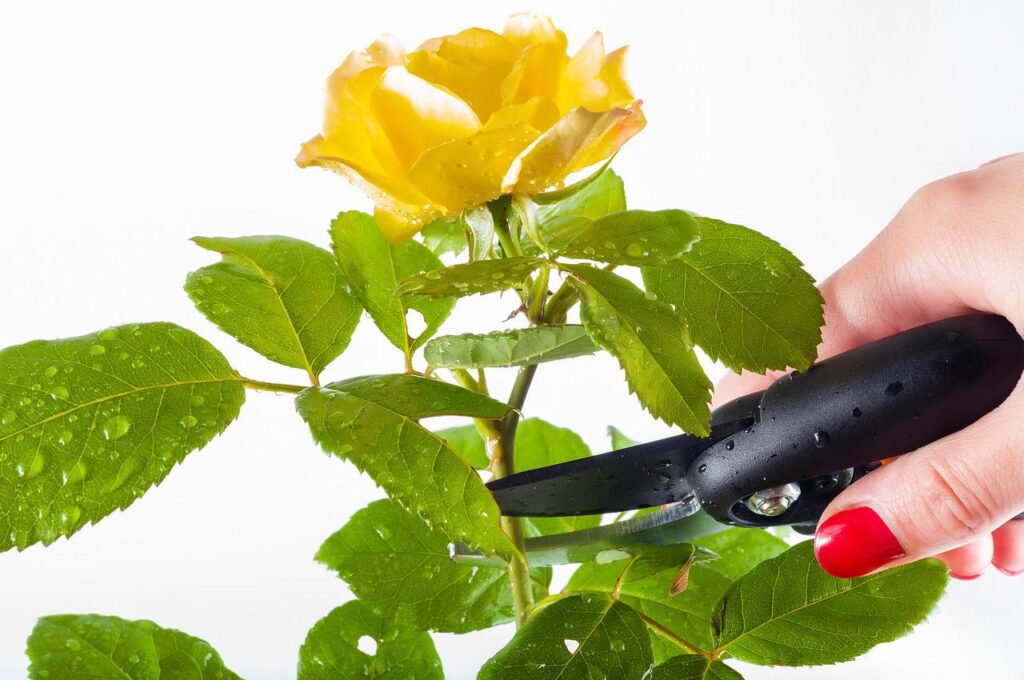
Regular pruning in succulents ensures healthy growth and flowering
Regular pruning once a year is ideal for desert rose plants, while every two years is perfect for Alocasia.
Practice Good Cultural Practices
Keep your plant healthy because healthy plants can better combat insect pests. Also, maintain proper hygiene around your indoor succulent garden or outdoor plants. In this way, the female adults will not be able to breed in dead plant material.
After pruning or cutting, properly remove and discard plant residues and dead from around the indoor plants. Treat the plant cuts with a fungicide to avoid any infection and its dispersal.
Always maintain proper growth conditions recommended for every succulent species. Reduce watering to control fungus gnats and keep good humidity to avoid the attraction of spider mites and mealybugs.
Use A High Stream Of Water To Wash Off The Mealybugs
Wash your succulents with a high stream of water for pest control especially spider mites and mealybugs. Cover the soil surface to avoid overwatering to get rid of trouble makers such as spider mites and mealybugs.
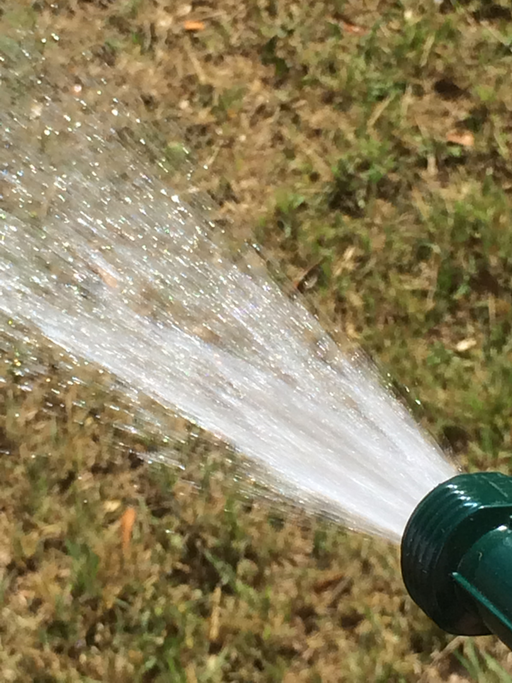
High streams of water will eliminate the pests on succulents
Poor ventilation and excessive moisture attract fungus gnats, spider mites, mealy bugs, and other true bugs.
Use Rubbing Alcohol To Remove Scales And Mealybugs
Take a Q-tip, dip it into a 70% isopropyl alcohol solution, and directly apply it to scales; it will deter their rigid cuticle and kill them.

Rubbing alcohol deter the rigid cuticle of scales and mealybugs
You can also use a diluted solution of rubbing alcohol (one part of isopropyl and three pieces of water) to deter succulent pests. Be careful with application because it can damage succulents’ tender and beautiful foliage.
Note: Always use half the recommended rubbing alcohol in dilutions before spraying on the plant.
Use Sticky Traps To Control Common Pests
The best, inexpensive, and environmentally friendly solution is yellow sticky traps. Yellow sticky traps capture adult flying insects (fungus gnats and male moths), interrupt their life cycle, and prevent the next generation.

Placement of yellow sticky traps in an outdoor garden
Always use bright-colored cards to attract more adults.
Encourage Beneficial Insects
Set welcoming homes and feed for beneficial insects and birds to encourage their arrival in your outdoor garden. These helpful bugs include lady beetles, parasitic wasps, and red coats. These bugs are the aggressive eaters of aphids, whiteflies, and nymphs of mealybugs.
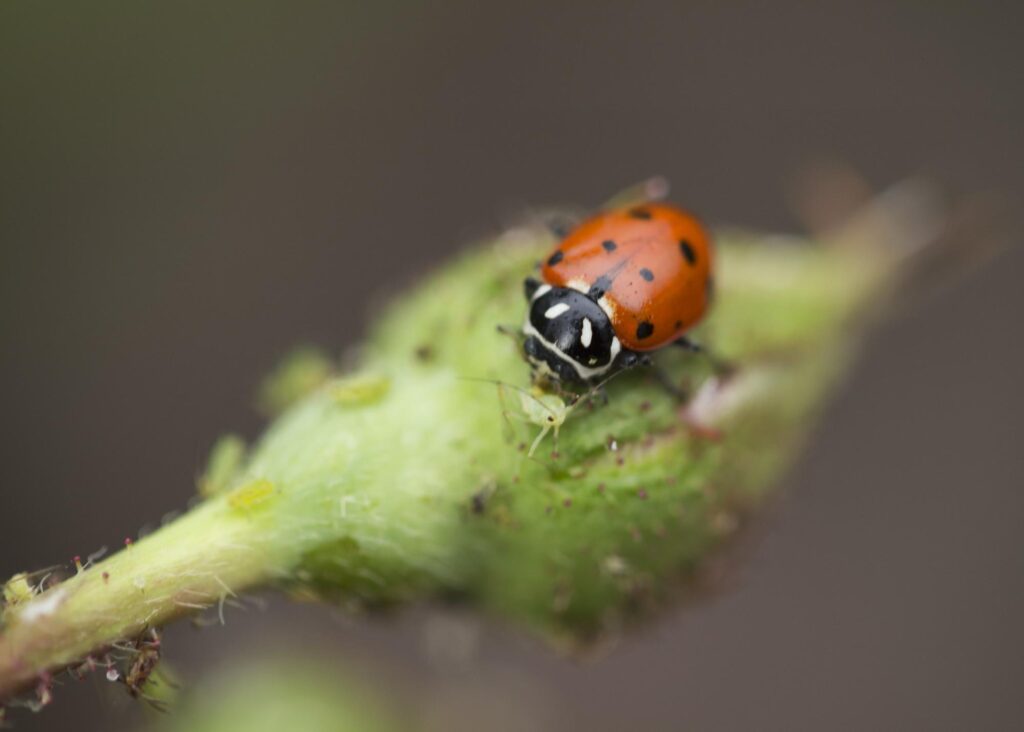
Lady beetle is munching on aphids.
While these bugs are in your garden, do not use any poisonous pesticide. Otherwise, it will kill them and interrupt your natural pest control strategy.
Use Insecticidal Soap
Spray your succulents with insecticidal soap to destroy the mealybugs and scale insects. First, remove any fallen dead leaves around your indoor plants (proper hygiene or cleanliness). Then prepare the insecticidal soap spray;
- Take one tablespoon of insecticidal soap in a container
- Add one tablespoon of white vinegar per one gallon of water
- Mix all the ingredients and pour them into a spray bottle
- Apply uniformly onto the plants and ensure the plant is entirely wet. Repeat the applications once a week for effective control
Use Neem Oil
Neem oil (azadirachtintin) is best to avoid microbial and pest invasions on succulents. Moreover, it is less toxic to the environment and does not harm pets and humans. To make a solution of neem oil;
- Take one teaspoon of neem oil along with dish soap in a bowl
- Mix both the ingredients thoroughly and add per gallon of water
- Pour the uniformly mixed neem oil solution into a spray bottle
- Apply biweekly on plants in the case of heavy infestations
Use Systemic Insecticides To Get Rid Of Pests On The Infected Plant
The application of systemic insecticides comes with rapid action. Use imidacloprid and acephate to kill the unpleasant and sap-sucking pests from your favorite succulents and cactus. Be sure to always use half of the recommendations to avoid plant damage.
Spray Your Succulents With Homemade Remedies
One of the best and easy solutions against any plant pests is homemade remedies, as they hold great potential for long-term control and are also popular among organic gardeners. These include onion and garlic spray, red chili spray, soapy water, peppermint oil spray, citrus oil spray, tomato leaves spray, and cinnamon spray.
These homemade remedies greatly repel and deter pests and help gardeners achieve their healthy plant goals.
Frequently Asked Questions
How Do You Clean Succulents?
Take a wet cloth or air blower, and wipe your succulent gently with a cloth. If it is not providing enough cleaning, then use all-natural soapy water to remove dust.
Is Hydrogen Peroxide Safe For Succulents?
Yes, it is safe for succulents and works wonderfully to kill the bacterial root rot. Simply pour the diluted hydrogen peroxide solution on your succulent at an early stage and watch its magic.
Can You Spray Alcohol On Succulents?
The direct application of alcohol to succulents damage their stunning leaves. So, to get rid of the most common pests (whiteflies, aphids, mealybugs, and scales) of succulents, applying the soapy water, neem oil, and insecticidal soaps harmless provide effective results.
While the use of alcohol to kill succulent pests is not acceptable if it is not diluted.
How Do You Keep Pests Off Succulents?
To keep the pests off, employ the following strategies;
- Keep your succulents healthy by maintaining optimum growing conditions (light, water, humidity, and temperature)
- Maintain proper cleanliness
- Remove any dead plant roots and repot your succulent
- Encourage beneficial insects in your outdoor succulent and cacti garden
- Apply apple cider vinegar dilution with water once a week to repel the adult insect pests
- Regularly monitor your succulents for insect infestation and if you find any, remove them manually.
- Check moisture levels in the soil before each watering. Do not keep your soil wet for an extended period.
- Always select the location for succulents with the best sun exposure.
Does Homemade Insecticidal Soap Work?
Yes, homemade insecticidal soaps work best against insect pests. They can control pests on both succulents and other plants successfully. Insecticidal soap dissolves the insect’s outer dermis and exposes the fluids to other beneficial bugs.
What Is The Best Pesticide For Mealybugs?
The best pesticide to eliminate mealybug infestations on succulents is neem oil, mild soapy water, and insecticidal soap spray. These agents suffocate the mealybugs, thus killing them. The neem oil also disrupts the insect growth regulatory hormone and interferes with their regular life cycle.
Sources For Further Reading
- Insect pests of cacti and succulents grown as house plants. (n.d.). Missouri Botanical Garden. Retrieved June 4, 2022, from https://www.missouribotanicalgarden.org/gardens-gardening/your-garden/help-for-the-home-gardener/advice-tips-resources/pests-and-problems/insects/mealybugs/insect-pests-of-cacti-and-succulents.aspx
- Scale Insects | Horticulture and Home Pest News. (n.d.). Iowa State University Horticulture and Home Pest News. Retrieved May 6, 2022, from https://hortnews.extension.iastate.edu/scale-insects
- Kabashima, J. N. (2014a). Scale Management Guidelines–UC IPM. University of California Statewide IPM Program. Retrieved June 4, 2022, from http://ipm.ucanr.edu/PMG/PESTNOTES/pn7408.html
- Drees, B. M. (2008). Managing Insect Pests of Cacti and Other Succulents in Water-Efficient Landscapes. Texas Nursery and Landscape Association. Retrieved June 4, 2022, from https://citybugs.tamu.edu/files/2018/09/Managing-insect-pests-of-cacti-B6215.pdf
Editor’s Recommendations
10 Best Natural Pest Control Remedies for Garden!
When is the Best Time to Change Succulent Soil?
Growing Tips and Facts About Jumping Cholla Cactus, Desert’s Most Mesmerizing Plant







